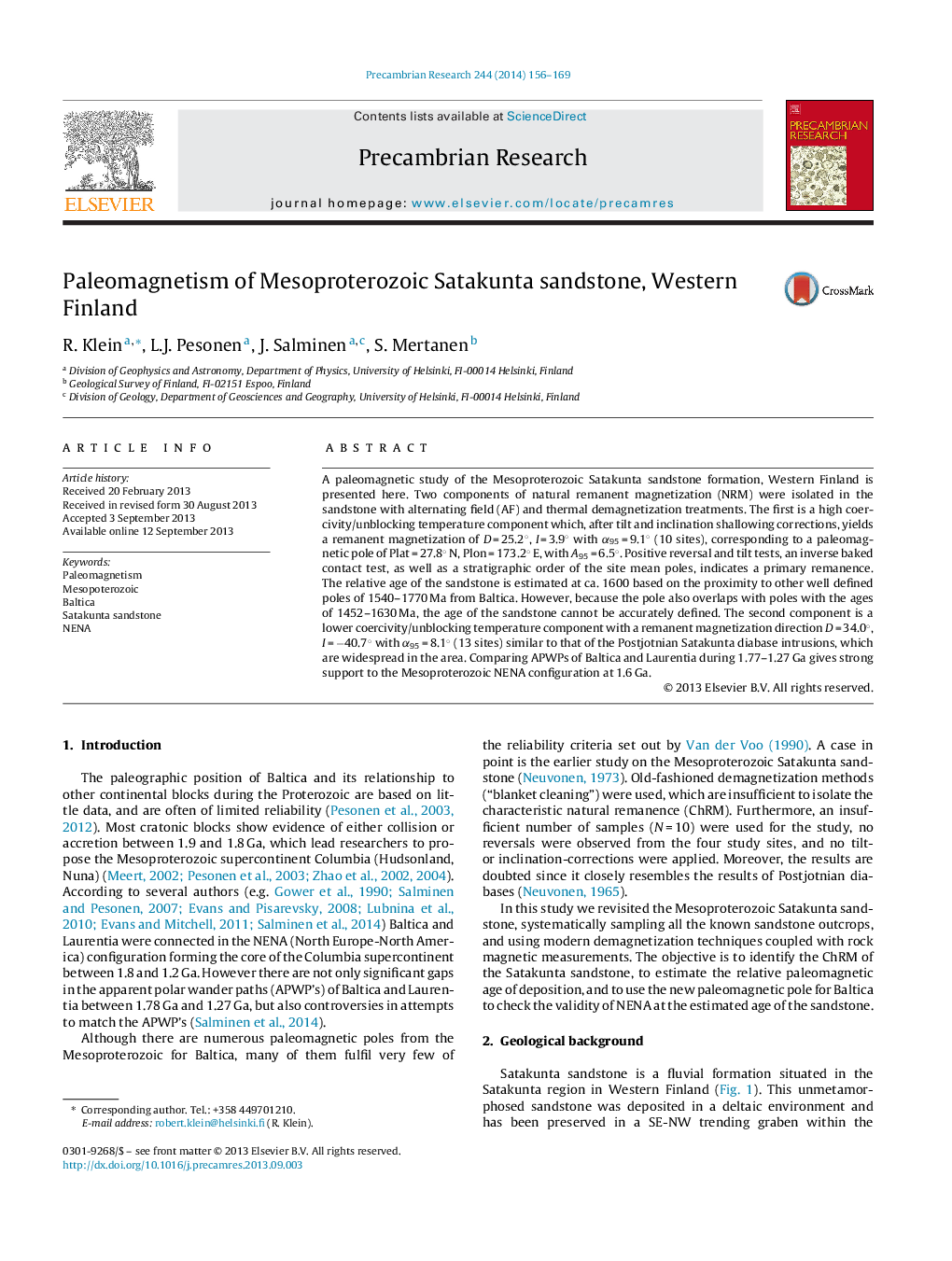| Article ID | Journal | Published Year | Pages | File Type |
|---|---|---|---|---|
| 4723046 | Precambrian Research | 2014 | 14 Pages |
•New paleomagnetic results for Baltica.•A new age estimate for Satakunta sandstone.•The proposed NENA configuration is valid during 1.8 and 1.2 Ga.
A paleomagnetic study of the Mesoproterozoic Satakunta sandstone formation, Western Finland is presented here. Two components of natural remanent magnetization (NRM) were isolated in the sandstone with alternating field (AF) and thermal demagnetization treatments. The first is a high coercivity/unblocking temperature component which, after tilt and inclination shallowing corrections, yields a remanent magnetization of D = 25.2°, I = 3.9° with α95 = 9.1° (10 sites), corresponding to a paleomagnetic pole of Plat = 27.8° N, Plon = 173.2° E, with A95 = 6.5°. Positive reversal and tilt tests, an inverse baked contact test, as well as a stratigraphic order of the site mean poles, indicates a primary remanence. The relative age of the sandstone is estimated at ca. 1600 based on the proximity to other well defined poles of 1540–1770 Ma from Baltica. However, because the pole also overlaps with poles with the ages of 1452–1630 Ma, the age of the sandstone cannot be accurately defined. The second component is a lower coercivity/unblocking temperature component with a remanent magnetization direction D = 34.0°, I = −40.7° with α95 = 8.1° (13 sites) similar to that of the Postjotnian Satakunta diabase intrusions, which are widespread in the area. Comparing APWPs of Baltica and Laurentia during 1.77–1.27 Ga gives strong support to the Mesoproterozoic NENA configuration at 1.6 Ga.
